Definitions matter because without precise meaning it is difficult to know what you’re talking about, exactly. Or even what’s being talked about, at all. It is why talking about “vaccines” that neither prevented those who took them from getting sick nor spreading it was both confusing and misleading.
It is also why it is confusing – and misleading – to speak of “four wheel drive” when what you’re really talking (and trying to sell) is all-wheel-drive.
Not that there is anything wrong with that.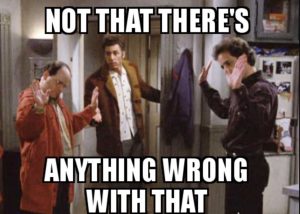
Well, with all-wheel-drive.
In fact, there is a lot that is very good about all-wheel-drive that is specific to all-wheel-drive. For example, there is less weight to lug around all the time – and most of the time, when that weight is deadweight, in that it serves no purpose. All-wheel-drive does not usually include a transfer case, which is used to engage the four-wheel-drive Low range that most AWD systems do not have (Jeep and some others use the transmission in some of their models to serve a similar gear-leveraging function, but it is not the same thing).
4WD Low range is very useful off-road and when there is heavy, unplowed snow on the road. But it is useless when you are on dry, paved roads. And heavy. It reduces fuel efficiency – so you pay more for gas. And it adds to the cost of the vehicle. Which is fine, if you need 4WD Low capability.
But if not, why pay for it? Why pay to lug it around all the time?
All-wheel-drive hasn’t got a transfer case/Low range gearing. But it does have the ability to transfer engine power to all four wheels in varying ratios, according to the available traction. All-wheel-drive systems are usually power-flow-biased toward the front wheels, which are the main drive wheels. Most of the time, almost all of the engine’s power gets to the road via the front wheels, which pull rather than push the car – as in a rear-drive car and in four-wheel-drive trucks and SUVs, which route all (not some) of the engine’s power to the rear wheels until the four-wheel-drive is engaged.
All-wheel-drive automatically meters engine power from front to rear (and rear to front) as driving conditions – as traction – warrant. As determined by wheel slip. Sensors note that – as an example – the front wheels are slipping because they are rotating faster; power is routed (automatically) to the wheels that are not slipping. Some all-wheel-drive systems can meter power to individual wheels, which can be and is used to aid traction/stability during high-speed cornering.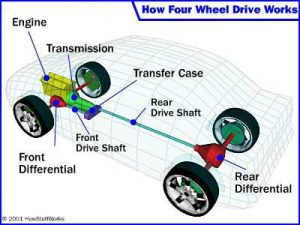
Four wheel drive is not meant to aid handling/high-speed cornering. It is designed to split power front to rear in a 50-50 ratio when the four-wheel-drive is engaged. It is not supposed to be engaged unless the vehicle is being driven off-road or on roads covered by snow, with the object being to keep the vehicle from getting stuck – as opposed to going around corners quickly.
In summary, all-wheel-drive is the better system for on-road driving and for fast driving – with the additional benefit of greatly increasing traction in the snow, sand and rain. This is not to deny the different merits of four-wheel-drive (and Low range gearing).
The point is the difference.
So why do so many manufacturers of all-wheel-drive-equipped vehicles (e.g., certain Jeep models, Subarus, Hondas, etc.) that are not equipped with four-wheel-drive market them as having “4WD”?
It is probably because the general perception is that four-wheel-drive is more capable than all-wheel-drive. More rugged. More macho. In fact it is differently capable, as explained already. And it is more rugged, in the sense that the system components tend to be made of heavier-duty bits and pieces, precisely because they are expected to be able to deal with heavy-duty conditions, such as those that obtain off-road, without breaking.
But as regards more macho – well, ask a Rally driver about that.
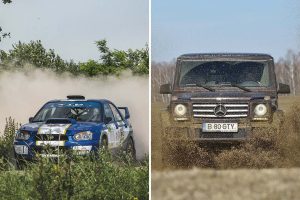
There is nothing wimpy about all-wheel-drive. But it is not four-wheel-drive, except in the sense that all four wheels are driven. The same is true of four-wheel-drive (when the four-wheel-drive is engaged). That similarity does not make them the same, however.
Using the same term to describe these two different things confuses things.
Kind of like the way people were confused about the “vaccines” they were led to believe would prevent them from getting sick – or spreading it. Vaccines are understood to do exactly that – i.e., prevent you from getting or spreading the sickness you just got vaccinated for. Instead, people were misled into believing the drugs they were pressured to take were in fact vaccines, in the common understanding of the term.
That was malicious.
This appears to be just marketing.
Still, it would be nice if it were not misleading – so that people understood what they were buying. As well as what they were (and were not) getting.
. . .
If you like what you’ve found here please consider supporting EPautos.
We depend on you to keep the wheels turning!
Our donate button is here.
If you prefer not to use PayPal, our mailing address is:
EPautos
721 Hummingbird Lane SE
Copper Hill, VA 24079
PS: Get an EPautos magnet or sticker or coaster in return for a $20 or more one-time donation or a $10 or more monthly recurring donation. (Please be sure to tell us you want a magnet or sticker or coaster – and also, provide an address, so we know where to mail the thing!)
My eBook about car buying (new and used) is also available for your favorite price – free! Click here. If that fails, email me at EPeters952@yahoo.com and I will send you a copy directly!


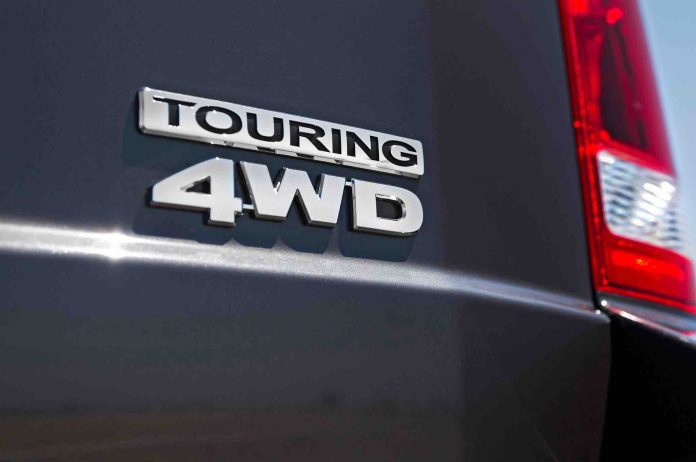




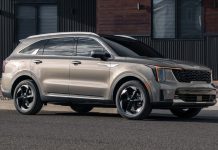



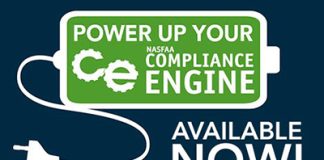
There is another version of 4WD which works
perfectly for me – vehicle: 2012 RAV4 V6.
There is no transfer case and the 4WD functions automatically.
It’s always in 4WD from a stop and automatically disengages
at 25mph. Rarely do I go off-road but it’s super useful for
wet or sandy roads, and drag racing.
Many front-wheel-drive-only vehicles I’ve driven had an
annoying tendency to spin the front wheels even with
moderate acceleration.
The 4WD on my 23 year old truck is deadweight until I need it –usually 2-3 times per year. When I was a young buck, dad would make me jump out to lock the front hubs. Locking the front hubs meant that we were already in mud or whatever. The push button 4WD was a God send.
On my Audi Allroad the AWD is just about useless off road apparently. At least if you get stuck in a quagmire of any sort — that happened to me and it had to be pulled off the side of the road back onto the road.
One thing that I didn’t try was using the ESP switch. That disables “traction control” but I don’t know if that would have helped me any better. Knowing Audi design, I’m pretty sure it wouldn’t have.
Does any know for sure?
Audi has the Quattro system, which is very well understood at this point. You have a torsen center differential which sends power to the axle with more grip, passively. I forget what the ratio is, but it’s something like 4-1 or 5-1. This means that the axle with more grip gets more power than the one with less grip, but five times zero is still zero. One wheel in the air means that wheel is spinning.
Your differentials on each axle are open differentials, which means that the wheel with less grip gets the torque (it spins). So far it sucks, no?
This is where traction control comes in. When some wheel starts spinning, it uses the brakes to slow it down, so that the other wheels get some more torque.
If you’re so stuck that you’re thinking of toggling ESP on/off as a way to get out, you’re not getting out. It can help, or hurt, depends on the conditions. The car also has all kinds of safeguards not to overheat the torque converter or clutches, so it won’t let you dig out of muck if too much clutch/converter slip is required.
This electronic brake based wheel-spin control is better than nothing, but not great, because while the brakes prevent the wheel from free spinning under power, it also prevents it from rolling along the ground efficiently. Real 4WD will make all 4 spin together and avoid this whole mess.
Some 4WDs, like my 97 Tacoma, have a locked up front axle when in 4WD. While it will go like no body’s business on a snow covered road, getting it to turn is another matter. I think why a lot of AWD vehicles end up in the ditch on snow covered roads is that they go so well, folks forget they have the same braking system as the 2WD model, and the same lateral traction.
I’ve had two cars with very interesting AWD.
The first was a Focus RS. It’s actually really good in slippery conditions, because the rear wheels are each individually clutched onto the the driveshaft (there is no diff). So, the car can deliver power to both rear wheels as though there was a locked center diff, and locked rear diff. What was really cool was the the torque was adjusted at about 100Hz, and as you turn the steering wheel, the outside wheel in the turn gets more power. It was remarkably good, better than typical AWD.
I replaced that car with a nice used Cayenne, and this thing, despite not having low range gearing, has a locking center differential, and a locking rear differential, so in slippery conditions, you can drive both axles at full power, but in front it’s going to use the brakes to prevent wheel spin. You get almost all the benefits of 4WD while having good steering response. It doesn’t hurt that I can raise the car about 4″ to clear deep snow and mud. It’s got enough torque, and enough torque multiplication through the torque converter, that it can kinda crawl like low range gearing, just not for super long, because doing it heats up the transmission fluid and you’ll overheat it in a matter of minutes, but it’s still great when it works.
Why are they conflating the two? My guess is that an all AWD system costs less money to build but if you can pass it off as a 4WD system you can make a higher profit. That and most people are stupid. Proof is the masktards we all still see in public.
I suspect to appeal to the goat roper urban cowboys with adequacy issues. I’ve even seen later model pickups with 4X4 painted on the tail gate. Which used to mean 4WD and 4 speed manual transmission. The latter having not been available new for some time.
‘All-wheel-drive automatically meters engine power from front to rear (and rear to front) as driving conditions – as traction – warrant.’ — eric
A more detailed description of individual AWD components at Gears Magazine identifies the critical part for shifting more power to the rear wheels:
‘The AWD Relay Module uses a 12 volt, pulse-width modulated signal to energize a stationary electromagnetic coil inside the RDU (Rear Drive Unit). A plate inside the rotating clutch pack is applied when the magnet is energized to control the amount of torque transferred to the rear axles. The longer the ‘on’ time for commanded pulse-width modulation, the more torque is transferred to the rear axles.’
https://gearsmagazine.com/magazine/putting-the-rubber-to-the-road-fords-light-duty-all-wheel-drive-system/
Obviously, a pulse-width modulated electromagnetic clutch — similar to antilock braking — should only be active when traction is poor. Otherwise, it’s got moving parts, electromagnetic coils and friction surfaces which will wear out and break with high duty cycles.
Whereas the traditional 4WD drivetrain in my vintage Nissan Frontier is all-mechanical — no electromagnetic clutches. This suits me fine as a thick-skulled, knuckle-dragging, Luddite gearhead.
Likewise. Though sometimes it would be nice to flip a switch and lock up the front hubs, when I get out and manually lock them, I know they’re locked, likewise when I unlock them.